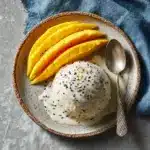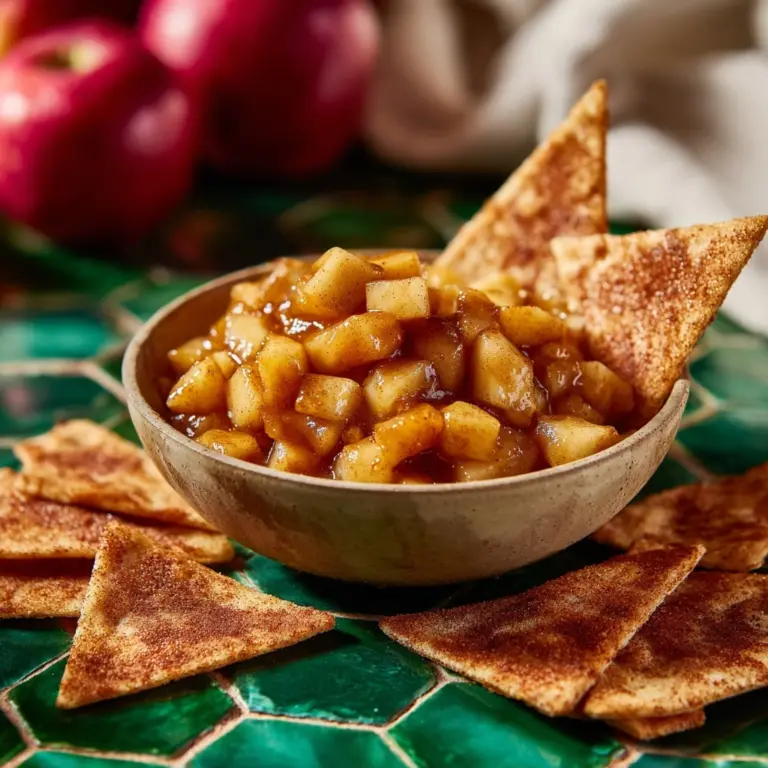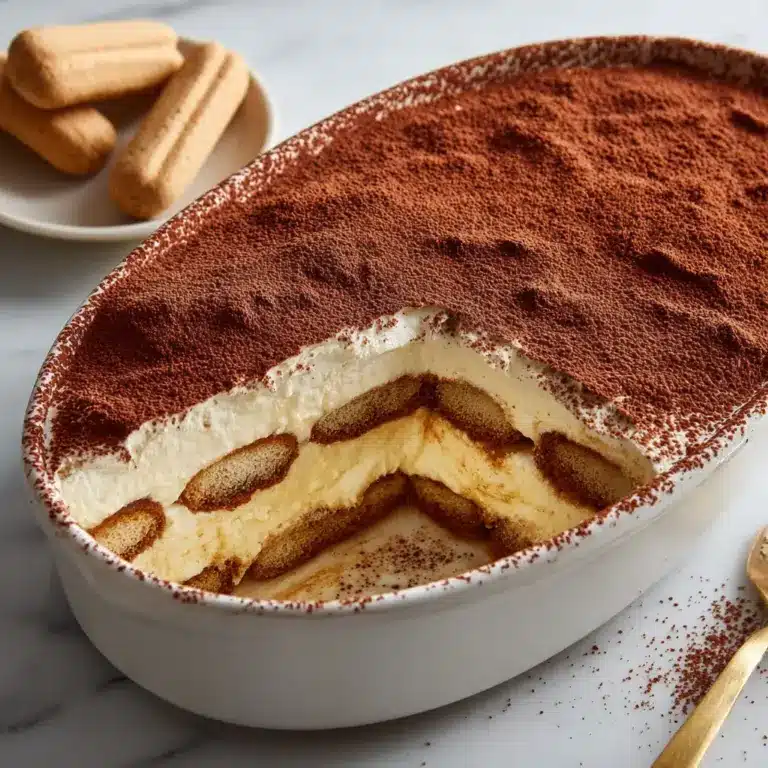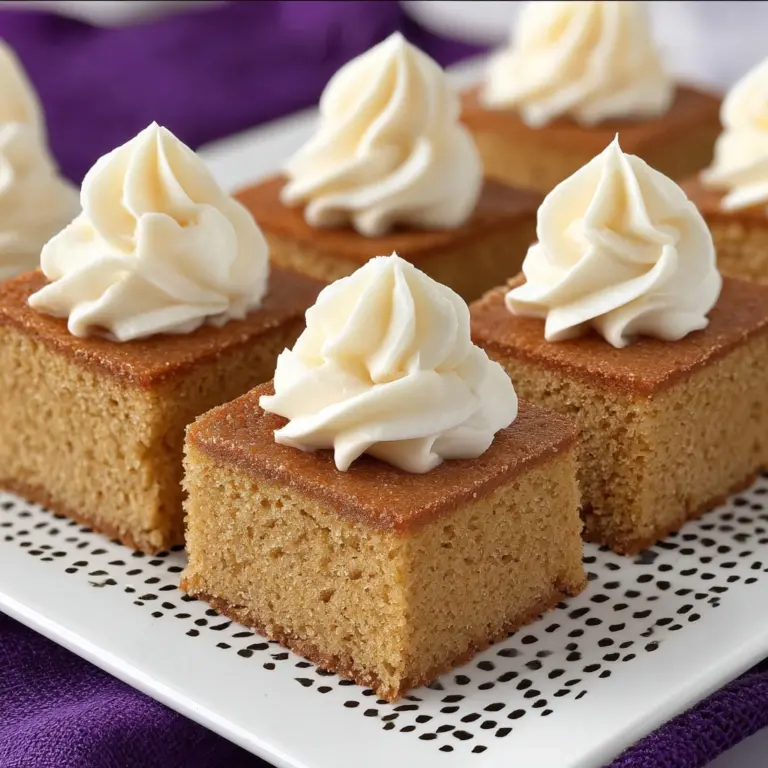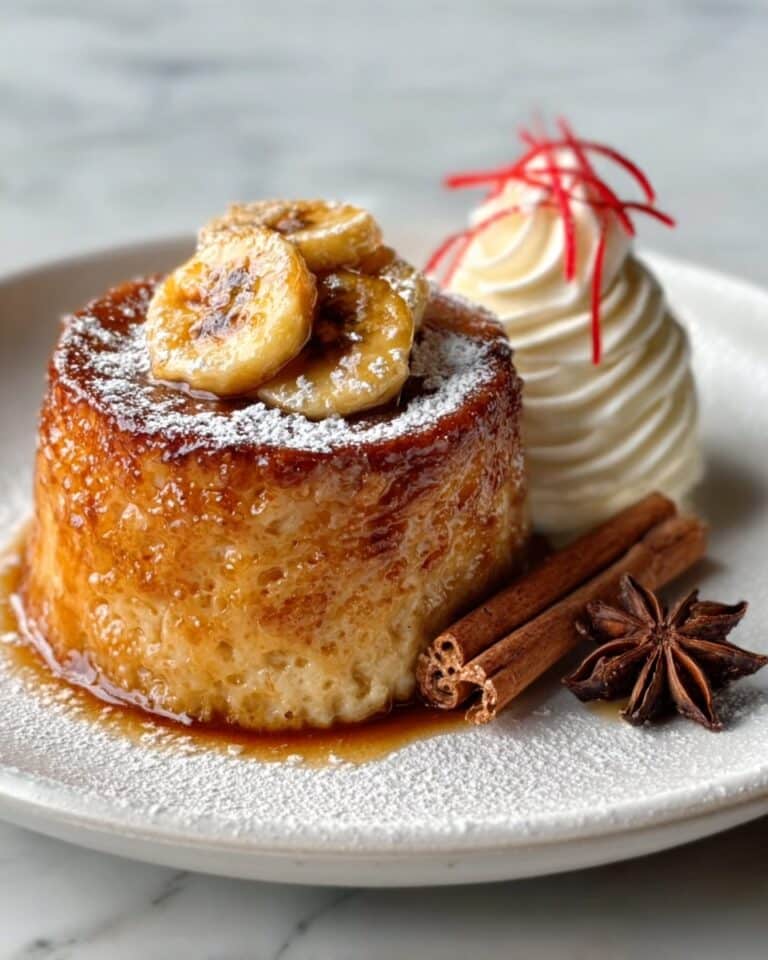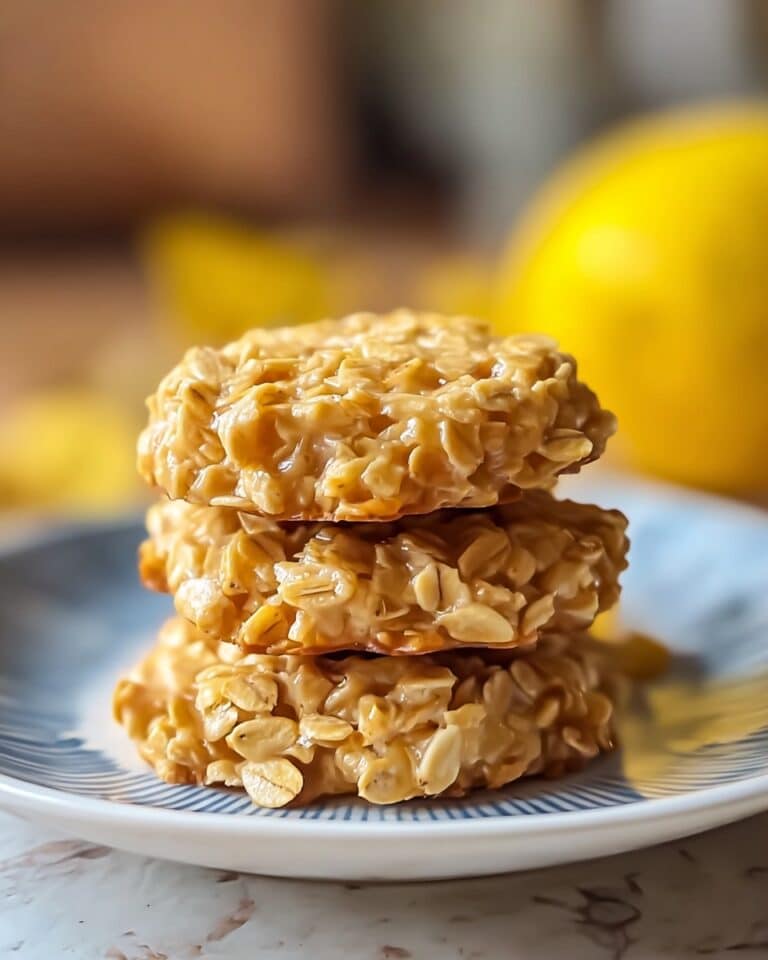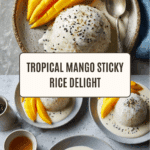Mango Sticky Rice Recipe
You haven’t truly experienced the magic of Thai desserts until you’ve had your first bite of Mango Sticky Rice. This irresistible treat beautifully balances warm, fragrant sticky rice with coconut cream and the sunshine sweetness of ripe mangoes. Each spoonful is a dreamy combination of comfort and tropical flair, making it no surprise that Mango Sticky Rice is beloved around the world. Whether you’re new to making Asian sweets or simply searching for the perfect summer dessert to impress friends, this dish will draw you in with its simplicity and irresistible flavor.
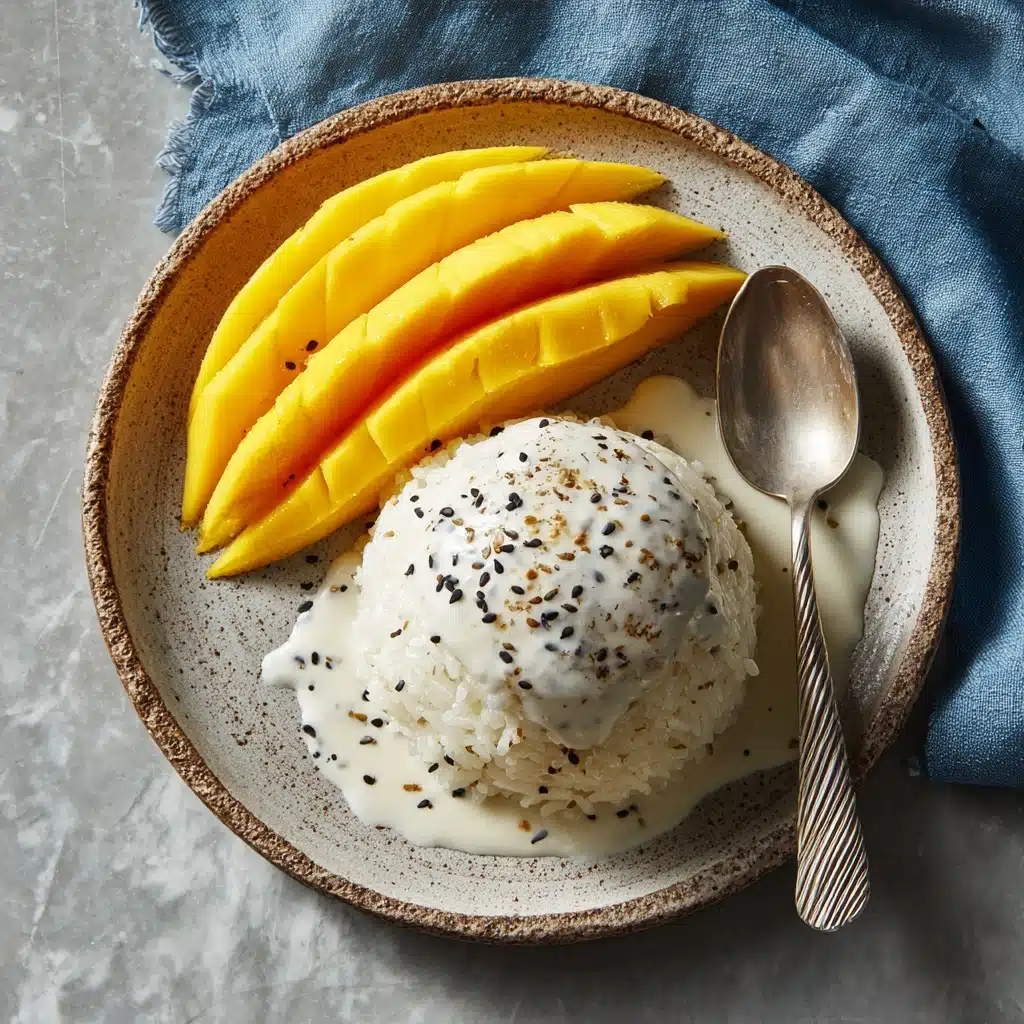
Ingredients You’ll Need
The beauty of Mango Sticky Rice comes from its short list of ingredients, each one playing a key role in achieving just the right taste and texture. Don’t skip or swap—let these essentials shine, and you’ll be rewarded with a dessert that’s as authentic as it is delicious.
- Sticky Rice: Use Thai glutinous rice for that signature chewy, velvety texture—it’s what sets this dessert apart from all others.
- Coconut Milk: Choose full-fat coconut milk for richness and authentic flavor; skinny versions just don’t have the same creamy magic.
- Sugar: Regular granulated sugar brings a gentle sweetness without overwhelming the delicate coconut notes.
- Salt: Just a touch elevates the coconut sauce, making it unforgettable (don’t leave it out!).
- Cornstarch (Optional): If your coconut milk is thin, a bit of slurry creates a luscious sauce that clings perfectly to the rice.
- Ripe Mangoes: Pick juicy, fragrant mangoes for that pop of color and honeyed taste—Ataulfo or Champagne mangoes are wonderful choices.
- Toasted Sesame Seeds (Optional): These add a gentle crunch and gorgeous finishing look—totally worth the extra step.
How to Make Mango Sticky Rice
Step 1: Rinse and Soak the Sticky Rice
Begin by rinsing your sticky rice under cold water, gently agitating it with your hand to wash away excess starch. Drain and repeat for a second rinse. Once the water runs mostly clear, add more cold water to cover and soak the rice for at least an hour, or better yet, overnight in the fridge. This step lets the grains absorb just the right amount of liquid, ensuring that perfect chewy bite later.
Step 2: Steam the Sticky Rice
When you’re ready to cook, transfer the soaked (and drained) rice to a heatproof bowl. Set up your steamer by filling it with a couple inches of water and bring it to a boil over medium-high heat. Place the bowl of rice onto the rack, cover, and let it steam for 20 to 25 minutes. The rice should turn translucent and tender, with no bite of rawness in the center. Leave it covered while you make the dreamy coconut sauce.
Step 3: Prepare the Coconut Sauce
While the rice is steaming, combine the coconut milk, sugar, and salt in a small saucepan. Warm it gently over medium or medium-low heat, stirring until the sugar is dissolved and the mixture is hot—just remember, you don’t want to let it boil! This keeps the flavors pure and the coconut milk silky.
Step 4: Thicken the Sauce (Optional)
If your coconut milk is on the watery side, you’ll want a sauce that lines the rice without pooling. Mix the cornstarch with water in a small bowl until smooth; add half of this mixture to your warm coconut sauce, stirring until it thickens slightly. You can adjust to your liking, but the goal is a sauce that lightly coats the back of a spoon—creamy and smooth.
Step 5: Mix Rice With Coconut Sauce
With oven mitts, carefully remove your steaming bowl of sticky rice. Pour 1 cup of your coconut sauce over the rice and stir it in gently. The rice will soak up the flavor like a sponge, becoming tender and fragrant as it rests. Let the mixture cool to room temperature or a gentle lukewarm; the flavors will meld as everything settles.
Step 6: Slice the Mangoes
While the rice soaks in all that coconut goodness, peel and slice your ripe mangoes into neat strips or cubes—however you like best. Their bright color and aroma will make your kitchen smell like a vacation.
Step 7: Assemble and Serve
Scoop about a third of a cup of the coconut-infused rice onto each small serving plate. Fan out the beautifully sliced mango alongside. Drizzle extra coconut sauce over the rice (don’t be shy—it’s what makes Mango Sticky Rice irresistible) and finish with a sprinkle of toasted sesame seeds, if you’re feeling fancy.
How to Serve Mango Sticky Rice
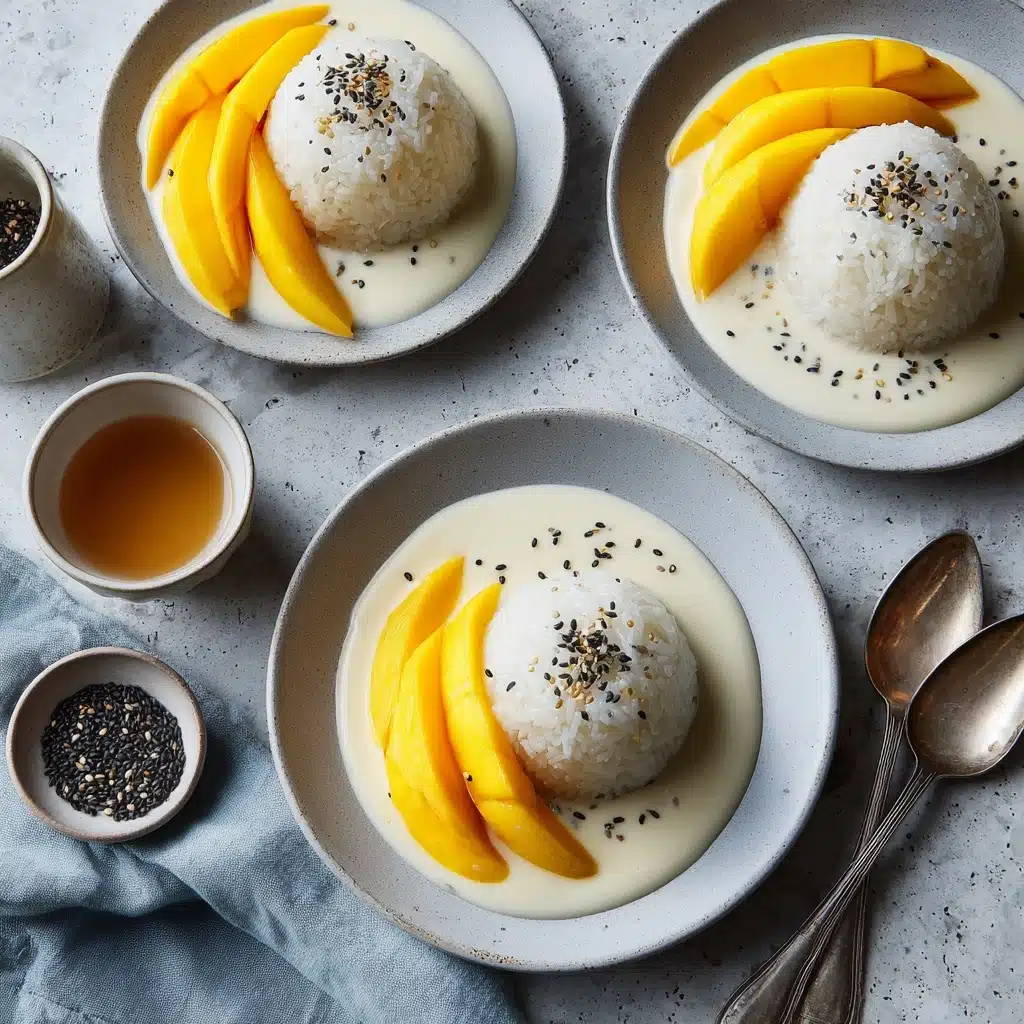
Garnishes
A sprinkle of toasted sesame seeds adds subtle nuttiness and a lovely crunch. For extra dazzle, consider a tiny sprig of fresh mint or a drizzle of extra coconut cream. A little lime zest over the mango can also kick up the tropical notes without overwhelming the dish.
Side Dishes
Mango Sticky Rice is often enjoyed all on its own, but if you want to build a dessert spread, try pairing it with Thai iced tea or delicate coconut jelly cubes. Fresh lychees or a small fruit salad can make for a refreshing counterpoint, letting everyone linger at the table just a little longer.
Creative Ways to Present
Feeling festive? You can mound the sticky rice into small molds or ramekins for beautiful domes, or use cookie cutters to shape it into hearts or stars. For parties, serve Mango Sticky Rice parfait-style in petite glasses with alternating layers of rice, coconut cream, and diced mango. It’s a showstopper every time!
Make Ahead and Storage
Storing Leftovers
To keep Mango Sticky Rice at its best, store plain coconut rice and sliced mango separately in airtight containers in the fridge. The rice can dry out if left exposed, so try to enjoy within two days for best flavor and texture.
Freezing
While the sticky rice itself can be frozen, mangoes do not freeze as elegantly—they tend to go mushy. If you want to batch prep, freeze the rice (without coconut sauce) in portioned bags. Thaw overnight in the fridge, then reheat and add your fresh sauce and mango for serving.
Reheating
For the softest results, gently steam leftover sticky rice or rewarm it with a splash of coconut milk in the microwave, covered with a damp towel. Avoid reheating mangoes; simply add fresh slices before serving to keep everything bright and juicy.
FAQs
Can I use regular rice instead of sticky rice?
Sticky rice (also called glutinous rice or sweet rice) is essential for the texture that defines Mango Sticky Rice. While you could try with short-grain sushi rice in a pinch, the results won’t quite match the chew and heartiness of the real deal.
Do I need a steamer?
A traditional bamboo steamer or metal steamer basket is best, but you can improvise by placing the rice in a heatproof bowl over a pot of simmering water with a tight lid—anything to steam the rice gently works! Avoid boiling the rice, as it will turn mushy.
Can I use coconut cream instead of coconut milk?
Coconut cream will make for an even thicker, richer sauce, which some people love. You may want to balance it with a bit of water to keep it from becoming too heavy, but it’s absolutely a delicious upgrade for Mango Sticky Rice fans.
How can I tell if my mangoes are ripe?
Look for mangoes that feel slightly soft to the touch with a fruity aroma around the stem. They should give a little when pressed gently—avoid fruit that’s overly hard or shriveled. Yellow-skinned varieties like Ataulfo tend to be sweetest and least fibrous.
Is Mango Sticky Rice gluten-free?
Yes! Sticky rice contains no gluten, and the other ingredients here are naturally gluten-free. Just double-check any additions or toppings to make sure they align with your dietary needs.
Final Thoughts
Now that you know every delicious detail, I hope you’ll give Mango Sticky Rice a try the next time you want to wow your taste buds or share a bit of Thai sunshine with friends and family. It’s so much more than the sum of its parts—once you experience that first bite, you’ll understand why Mango Sticky Rice has fans all around the globe!
PrintMango Sticky Rice Recipe
This Mango Sticky Rice recipe combines sweet sticky rice with creamy coconut milk sauce and fresh mango slices for a delightful Thai dessert.
- Prep Time: 1 hour
- Cook Time: 25 minutes
- Total Time: 1 hour 25 minutes
- Yield: 4 servings 1x
- Category: Dessert
- Method: Steaming
- Cuisine: Thai
- Diet: Vegetarian
Ingredients
Sticky Rice:
- 1 cup uncooked sticky rice
Coconut Sauce:
- 1 can full-fat coconut milk (13.5 oz / 400 g can)
- 1/4 cup sugar
- 1/2 teaspoon salt
- 2 teaspoons cornstarch (Optional)
Additional:
- 3 ripe mangoes, peeled and sliced
- Toasted sesame seeds for garnish (Optional)
Instructions
- Rinse the Sticky Rice: Rinse the sticky rice with tap water, drain, soak for at least 1 hour, then rinse again.
- Steam the Rice: Steam the soaked sticky rice for 20-25 minutes until cooked through.
- Make the Coconut Sauce: Heat coconut milk, sugar, and salt in a saucepan until hot and sugar is melted.
- Thicken Sauce (Optional): Dissolve cornstarch in water, add to sauce, and thicken to desired consistency.
- Combine Rice and Sauce: Pour sauce over sticky rice, mix well until absorbed.
- Serve: Portion the rice, add sliced mango, drizzle with extra sauce, and garnish with sesame seeds.
Notes
- For best results, use ripe, sweet mangoes for this recipe.
- You can adjust the sweetness of the coconut sauce to your preference.
Nutrition
- Serving Size: 1 serving
- Calories: 380 kcal
- Sugar: 25g
- Sodium: 300mg
- Fat: 20g
- Saturated Fat: 18g
- Unsaturated Fat: 1g
- Trans Fat: 0g
- Carbohydrates: 45g
- Fiber: 2g
- Protein: 3g
- Cholesterol: 0mg
Keywords: Mango Sticky Rice, Thai dessert, Coconut milk, Sweet rice, Fresh mango

